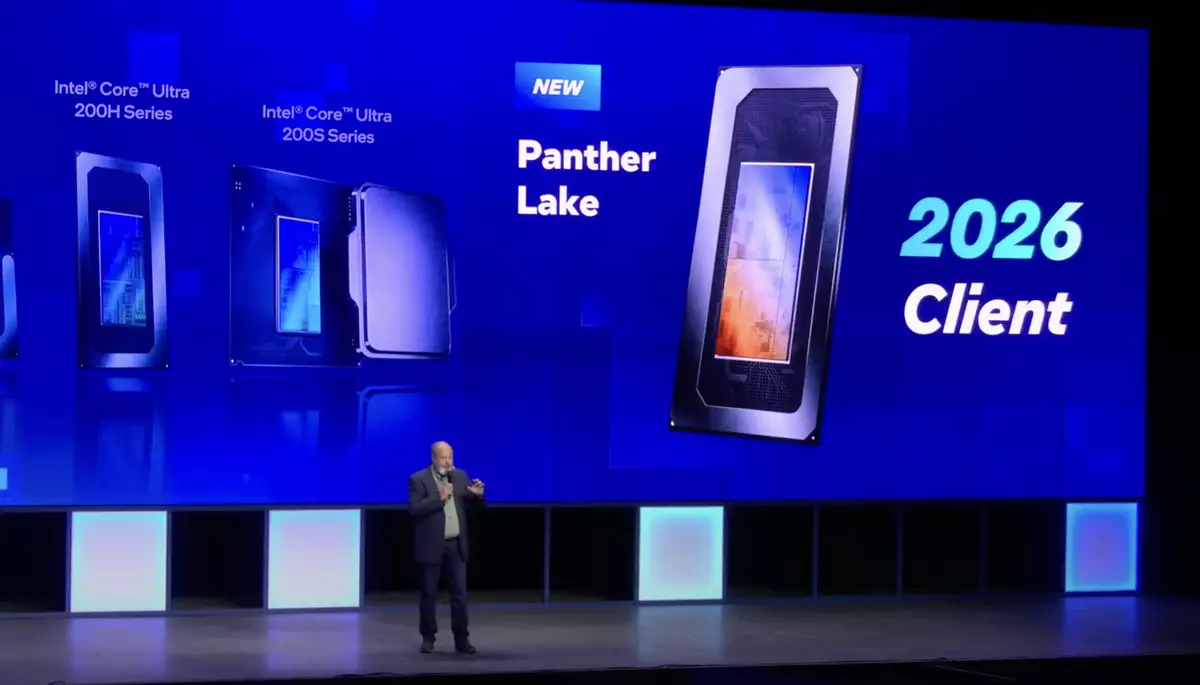Intel is at a critical juncture as it shifts leadership from the era of Bob Swan to the emerging stewardship of Lip-Bu Tan. Reaching out to an audience eager for advancements, Tan’s recent presentation at the Intel Vision 2025 event showcased a vision that blends aspiration with reality, albeit with a cautious tone regarding timelines and product effectiveness. The lack of explosive announcements may leave some tech enthusiasts wanting, but what transpired was a significant message about future products, specifically the forthcoming Panther Lake CPU.
Understanding Panther Lake
The nuances of Panther Lake are compelling. Essentially, this next-generation CPU aims to harness the energy efficiency of Lunar Lake while also tapping into the performance strength of Arrow Lake. For those not immersed in Intel’s architecture, Lunar Lake represents the company’s emphasis on low-power systems—ideal for laptops that prioritize battery life without significant compromises in performance. In contrast, Arrow Lake epitomizes mobile CPUs built for more demanding tasks, boasting higher core counts and capabilities. The goal of merging these two distinct lineages could create a potent chip that appeals to both casual users and power-hungry professionals.
However, this spirited ambition is coupled with skepticism regarding the actual timeline for Panther Lake’s market introduction. By indicating that production would commence later this year, but with products not expected until 2026, Intel emphasizes a familiar narrative of delays that the tech community has become all too accustomed to. This lag is further underscored by the reality that transitioning from production to market availability often takes longer than initially expected.
The Significance of 18A Technology
The 18A technology node is particularly noteworthy—not merely for its transistor density, but for the innovative approaches it introduces, including backside power management. This technology could redefine how processors manage electrical efficiency and thermals, akin to how the company previously struggled with its problematic 10nm node. The excitement is palpable; however, the cautionary tale of Intel’s recent struggles in chip production looms large in the background.
When the 10nm node fell significantly behind schedule, it not only hindered Intel’s competitive edge but also stirred doubts about its future in the landscape dominated by competitors like TSMC. The question that lingers is whether 18A will continue to follow a similar fate or emerge as a groundbreaking success. This uncertainty serves both as a reminder and a rallying cry.
A Fragile Balance of Innovation
Intel’s journey towards technological leadership is laden with obstacles. The announcement of Panther Lake is a pivot point, but it’s necessary to consider that this confidence might be masking substantial internal challenges. With the ambitious roadmap of 18A facing hiccups—primarily due to reports of low production yields—the expectation that it will deliver cutting-edge technology in a timely manner is tenuous at best.
Moreover, in the wake of the canceled 20A node (another lost opportunity), one can only hope that Intel’s recalibrated strategy will bear fruit. The competition, especially from TSMC’s rapidly advancing N3 and soon-to-be-launched N2 nodes, places additional pressure on Intel to not only deliver but to ensure that Panther Lake lives up to the hype.
Seeking Redemption
The tech community watches Intel with a blend of hope and skepticism, eager to see if the company can rewrite its narrative. For many, innovation and leadership are not just about technological superiority; they rely heavily on the effective execution of strategies and timelines.
As Panther Lake approaches production, the industry’s expectations grow, bolstered by both the potential this CPU might unlock and the specter of past delays. The window for recovery narrows, and Intel must ensure that it not only leads in theory but also in reality. The stakes have never been higher, as the market eagerly awaits proof of whether this renewed vision can transform into the competitive prowess that has eluded Intel for years.

